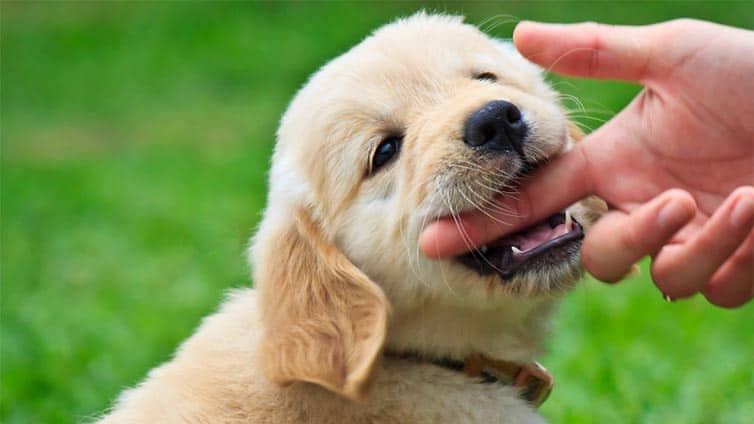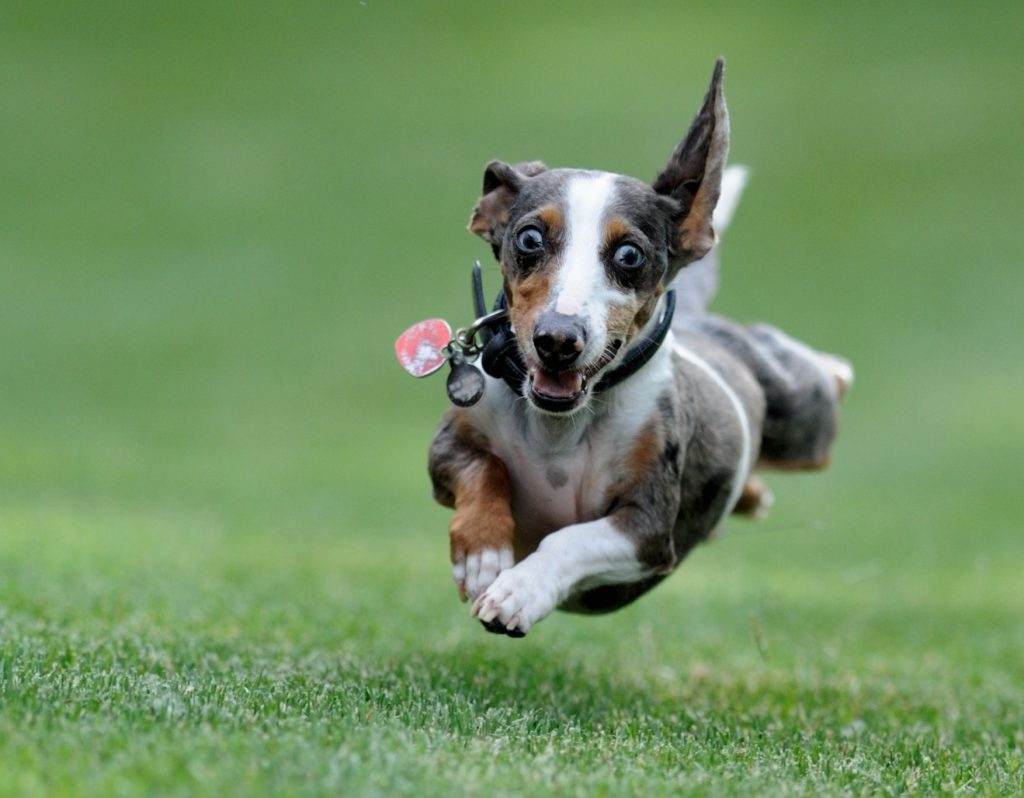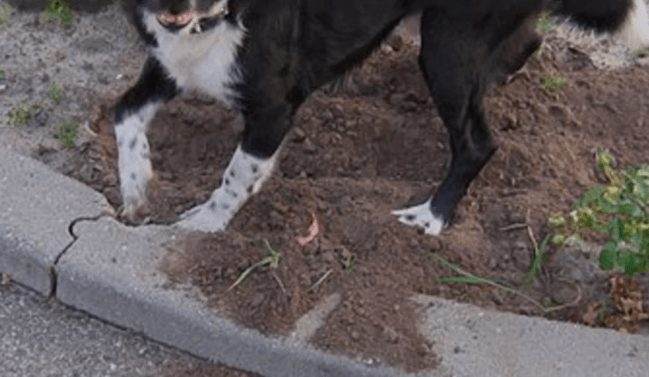For new puppy owners, it is best to look for opportunities to play games like fetch games with your puppy. Other than that, the use of gates, crates, good healthy food and being soft on the use of collar are also useful things to do
Getting a new puppy is a really exciting time. In the weeks leading up to getting a new puppy, people often make some really great choices. Getting an appropriately-sized crate for their dog, getting appropriately-sized treats and toys for their new puppy, as well as educating themselves.
But occasionally, people make some really big mistakes and miss out on opportunities to train their dog in the first few days that they’re home.
Your Relationship with Dogs
Most pet owners make mistakes when they bring a new puppy home, it’s inevitable. While these mistakes often occur, it’s not because the person doesn’t know how to care for a pet, it just happens at times due to the lack of prior knowledge.
Bringing a new fur family member into your home is exciting and wonderful, it’s no wonder humans make some mistakes, after all, we’re only human.
The human-dog relationship relies on the human part of the relationship to do it right, not the dog part. Some mistakes occur because we may not always have the correct understanding of how a human-dog relationship works, it is up to us to figure it out.
Being a dog owner is an amazing and wonderful experience, and as dog owners, we must learn to teach, lead, and protect our pets. In return, they will supply us with companionship, loyalty, and undeniable love for as long as they are able. Who wouldn’t want that?
Here we’d like to share with you some common mistakes humans make when getting a new puppy. Have you ever done any of these? We bet there are a few on the list you never thought were mistakes, it’s an affliction all pet owners share, have no fear, many of us have been there.
#1 Initial Fear
When puppies are about eight to 10 weeks old, they often go through a common fear period. This typically is a similar time to when we bring him home for the first time.
A couple things that I like to do with the pups so that they don’t feel overwhelmed is to let them investigate a little bit. Try not to force them to pay attention or do certain things.
When I brought her (my pup) in for the first time, I put her down. Let her sniff, let her check things out.
When I took her outside for the first time, I carried her in and out. So she didn’t have to worry about managing stairs or seeing shadows and hearing different sounds for the first time. One thing at a time.
You also need to teach your kids on how to treat a puppy who is new to the home environment.
#2 Go Easy on Collar
The other thing that I find a lot of puppies can be overwhelmed is their collar. One of the first things people like to do when they get a new puppy is put the flashy new collar on. When we first put the collar on my pup, she spent the first 15 minutes itching and itching and itching so I waited a little bit before I put that on.
Just again, get her feeling a little bit more comfortable. Using crate training with pee pads can be another great way to not overwhelm your puppy. But you should use it wisely. It’s not advised to use the crate and keep the puppy in a very unsocial part of your home. It could actually cause the puppy to cry more or get more anxious in their crate.
We try to move our crate around. So if we’re in the living room, we’ll have her in the living room in her crate with us. When I’m sleeping at night, she’s in the crate beside my bedside table.
So I can hear her and take her out if I need to. Just trying to make sure that although she’s in there and she’s under control, that she’s not being separated from our family.
We also have an article on gentle leader collar to control barking but that also has to be used once your puppy shows a response. Never force it.
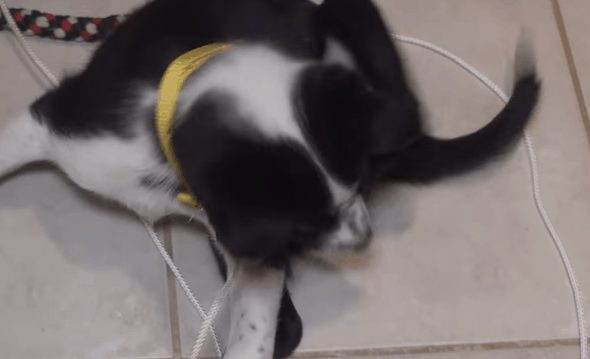
#3 Controlling Puppy’s Freedom
Another thing people often struggle with is supervision and freedom, controlling a puppy’s freedom. When you first get a puppy home, they’re often very curious. They want to check everything out.
If you have a busy household and a lot going on, it’s really easy to kind of forget where they are. Every moment of the day, your puppy’s learning, whether it’s right or wrong. If you’re not there to say whether it’s right or wrong, they could be learning some pretty wrong things.
A couple of things that we do to help control her freedom is using a long line. When she’s out of her crate and she’s roaming around the house, she’s always dragging a light rope behind her. If she gets into any bad trouble, I can redirect her very easily.
The other place I use the line is outside. So she’s out on the lawn and she’s running around, having some fun or having her bathroom time.
I can control her really easily if a distraction comes upon me and she decides to go after it. I can stop with her with the long line and keep her safe and keep her under control.
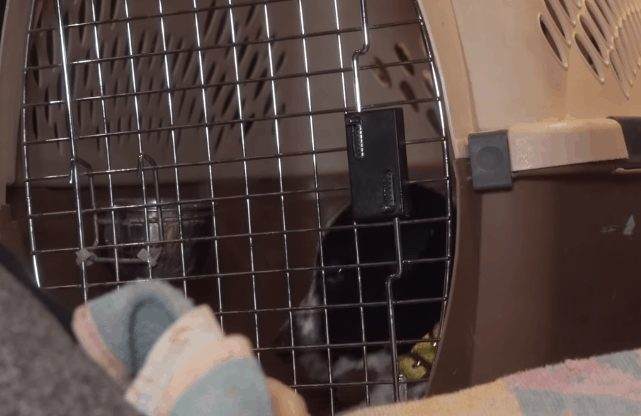
#4 Using the Dog Gates
Also in the house, to make sure she doesn’t get into too much trouble, we use different barricades and baby gates. If I’m in the kitchen, she’s in the kitchen, she can’t roam off into another room and make any bad choices.
This allows me to set her up for success. I’m spending more time telling her what a great puppy she is and less time getting frustrated with her making mistakes. Her mistakes aren’t really her fault, it’s more mine for allowing her to be in that scenario in the first place.
#5 Natural Training Opportunities
The other thing people often forget about is natural training opportunities, things like breakfast, lunch, and dinner. When your puppy wants to eat food, there is other stuff that you can do rather than just putting the bowl down and walking away.
You could use that valuable time of the day to build a relationship, like hand-feeding them. Teaching them good things comes right from you. That’s a great time for me to teach her:
- How to respond to her name
- What the word yes is
- How to sit or how to lie down
- How to lure for food
These are going to be the basics of a lot of the training that I do.
#6 Playing Games
One of the most favorite games that we like to do with our puppies at home is restraint recalls or recalls down the hallway. We sit at either end of the hallway, close all the doors so she can’t go anywhere but us.
We just practice calling her back and forth and back and forth for her food> This ties her out and teaches her that coming to her name and coming to us is a really really fun thing.
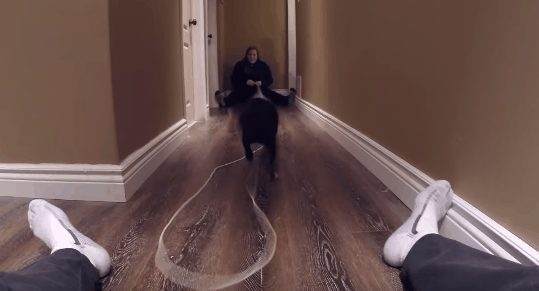
With the right education, there’s a lot of opportunities to learn what to do with your puppy on the first couple of days you bring them home. That will really set you up to have a great relationship with your puppy in the future.
#7 Not Socializing Your Puppy with the World Outside
Most puppies are social butterflies, they love to play and socialize with other dogs, children, people outside of your family, they need to see the world they are a part of now.
Pet owners usually get their puppies between the ages of 8-14 weeks. Before then, don’t forget the only socializing they did was with their littermates and breeder.
Many times pet owners do not socialize their puppies before 16 weeks of age, but they should be socialized to others and the world outside as soon as you bring them home.
Take them everywhere with you and let them meet the outside world, honking horns, children playing, dogs playing, dogs barking, and people talking. Let them experience real life, it can help them prosper as they grow up.
#8 Thinking Puppies Are House-trained Right Away
You didn’t know where to poop for the first couple of years of your life, thankfully puppies figure that out sooner. Do not expect your newest family member to know where to do his business without your help.
Keep in mind that house training issues are one of the main reasons pups are returned to the kennel they came from because humans get aggravated and lose patience at trying to train a new puppy.
Chances are your new puppy will not be trained in two weeks, it could take 6-8 months, consistency and patience go hand in hand here.
All new dog owners need to have a consistent and constant schedule in place for house training their new pups, and we must be strict about their schedule. They need to be taken out after each of the following:
- After they wake up
- After they eat and drink water
- After playing
Limit their water intake to five or six times a day, and feeding two to three times a day. A smart idea is to stop them from drinking water at least two hours before bedtime, so there are no middle of the night walks or piddle accidents. By sticking to a schedule, your puppy can be house trained in no time.
#9 All Puppies Are Not the Same
Yes, they’re all cute and adorable, but that is where the similarities end. No puppy is the same as another, even if they are with a littermate, their personalities differ just as they good or bad habits do.
Do not forget to realize that their behavior may also differ depending on where they are from like a shelter, pound, adoption agency, or a private owner. Patience is of the utmost importance.
#10 Kids Need Supervision Around New Pets
It’s natural for kids to want to cuddle and get overexcited about new puppies, but they still need supervision for their safety and the new puppy’s safety.
A mistake that many dog owners make is not giving the dog the respect they deserve. Dogs have a line of tolerance that shouldn’t be crossed, just like we do.
This is especially true for dogs that have been abused in the past. Here are a few do’s and don’t s when children and dogs are together:
- Do not let children poke at the puppy or pull its tail.
- Do not let children squeeze the puppy.
- Do not leave children unattended with the puppy, things can happen just that fast. Use a gate to block off the pup or take the child with you if you leave the area.
- Do encourage good behavior from the child and tell them to keep calm when they are around the puppy. When both the child and dog behave correctly, reward them each with a treat or snack.
- Do not let the child stare the dog down, this can be perceived as aggression.
- Do not allow the child to hug, squeeze, or pick up the dog frequently. Instead, try teaching them to use common commands the dog understands, positive reinforcement is a big plus.
- Do allow the pup and child to play together. Try teaching your pet a fun game that you can all play together, like ‘find it’ and teach them to find the treat.
- Do teach children to recognize and understand behavior from the dog such as walking away, snarling, or nipping. These signs mean they’ve had enough, it’s time to move them away from each other.
#11 Feeding – How Much, How Often?
Orthopedic diseases can occur in dogs due to being overfed as a puppy, even though that is not the only reason, it ranks high on the list. This is especially true in large breed dogs.
These large breed puppies, do require a little more feeding, but they also require a healthy diet to grow and prosper. They also need a diet that promotes slow but steady grown.
Smaller breed puppies, oftentimes need a more energy-efficient diet. As you can see, there are differences.
When determining what to feed your puppy, consider these factors: age, current weight, breed, adult weight, activity levels, and the type of environment they live in.
Younger puppies eat near three to four times a day. As they age, older puppies can usually eat a couple of times a day. Keep in mind that puppies do eat more often than adult dogs.
Depending on the food you choose, most feeding instructions on the packages are general guidelines and help you when knowing how much to feed puppies.
All puppies are different, and breeds differ also. If you have any questions, be safe and contact your veterinarian for a consultation.
Here is an excellent video to help you out with choosing food for the puppy.
Also, keep in mind that the type of food you feed your puppy can make a difference. We aren’t talking about brands so much as raw-fed and kibble-fed.
Pups on a raw food diet will need to be fed more because raw food often lacks the fat and calories needed to keep your puppy healthy.
There are fewer calories per ounce of raw food. Whereas kibble food ingredients include the basic needs of your puppy as far as calories and fat per ounce.
A few other aspects to keep in mind when feeding your puppy is to let them eat at their own pace for 10 minutes. This can be done around three times a day, but again, all puppies are different and this is not set in stone.
It is suggested to feed your puppy enough to keep him or her lean. However strange that sounds, you should easily be able to feel their ribs spine and obvious waistline.
Speaking with a holistic veterinarian to ensure the number of calories your particular puppy needs, and after about 6-10 months, you can start your pup on regular adult food.
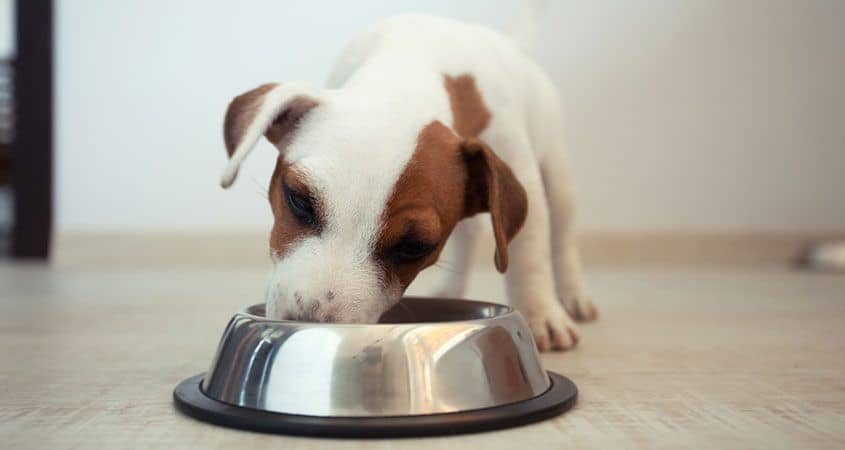
#12 Teeth and Nails Matter
Just like your teeth and nails matter, so do your pups. Some breeds nails grow thicker and stronger than others, and they must be taken care of to avoid damage to their feet.
Their teeth should be brushed several times a day as well to help avoid gum disease, teeth rot, and bad breath. Much of the brushing process is to get them used to it, not so much cavity prevention.
There are also many canine breeds that are prone to unusual amounts of plaque. Without taking these simple steps to help improve your pup’s oral hygiene, they can be prone to gum disease earlier in their lives.
For their nails, regular grooming is necessary, and if need be, you can always go to a professional groomer or veterinarian to clip their nails.
Learn More With the Help of Video
#13 Avoid Using No With Your Pup’s Name
Avoid using the word No in association with your pet’s name, it will just confuse them and they’ll think they are in trouble each time you call them.
Instead, they should come to you easily, and not be afraid they are in trouble because of something. So, it’s best to avoid using the word no and your pup’s name in the same sentence.
#14 Be Careful When Repeating Commands
Avoid repeating the command more than one time when you are training your pup. If you say the command ‘sit’ three or four times in a row, your pup may think they need to sit after you’ve repeating it a few times, instead of the first time it is said.
#15 Crate Training is Not Cruel
My pups and many others have always been raised in crates through their training and more. When it is done appropriately, your pup will come to enjoy his ‘bed’ or crate, plus it can help keep them out of trouble with chewing, digging, or eating things they should not.
Crate training is a great tool to use for house training your puppy.
#16 Research Your Pup’s Breed Beforehand
A big mistake that dog owners make is not researching the breed they are considering adding to the family. No one breed is alike, we’ve said this before, they are all different.
Research everything that comes with the breed you’re considering such as size, potential health issues, temperament, speed, agility, energy levels, space needed, literally everything you can about their breed.
It is better to be prepared than having to give the pup away because you didn’t do your research. It isn’t fair to you, your family, or the pup.
If you want to know in detail about each breed, then look at the Wikipedia database for the same.
#17 Car Rides are Not Just for the Veterinarian
Do not make car rides just for a visit to the vet. Take them to other places in the car too, the store, the park, everywhere. If you use a car ride just for the vet, they will associate it with going to the vet.
Always remember to praise and reward them for being good in the car, and they will find it an enjoyable experience instead of a non-enjoyable experience.
#18 Pet Store or Adoption Agency?
Commercially sold pets are often found in poor living conditions. If you choose to buy a pup or pet from a pet store, this means you are rewarding them and allowing them to keep up the bad behavior or conditions.
Adopting from a reputable shelter or breeder is a much better option for several reasons:
- Allows the shelter free space for another unfortunate animal.
- Saving pets life.
- It allows for another pet to get a second chance at life.
- The process is much more in-depth.
- They match pups with owners better.
#19 Give All Dogs a Chance for Adoption
When searching for your new furry member of your family, puppies and adult dogs make wonderful pets. Many people prefer puppies, but also remember that puppies will take more work than an already house trained older dog.
Do not pass one by just because they are not a puppy, older dogs deserve their forever home too.
An unfortunate fact is that pups that are abandoned or given up for adoption are oftentimes between the age of 12 to 18 months old.
Consider your family and home situation also when deciding on a new dog, maybe even a senior dog is more up your alley as they don’t usually require as much maintenance, and are lower in energy.
Leave no stone unturned when searching for your new furry family member. Puppies, young dogs, and adult dogs all deserve the love you and your family can give them.
References
- https://link.springer.com/article/10.1007/s11042-016-3824-1
- https://onlinelibrary.wiley.com/doi/abs/10.1111/rda.12329
- https://arxiv.org/abs/1510.02781
Table of Contents
